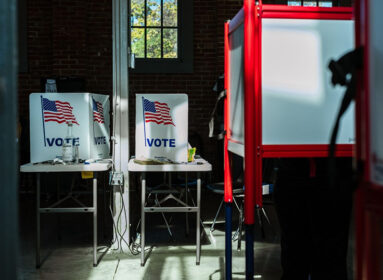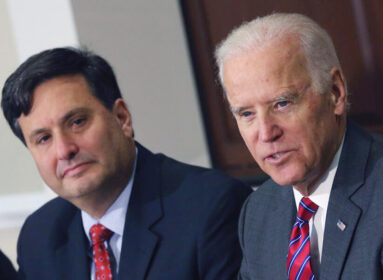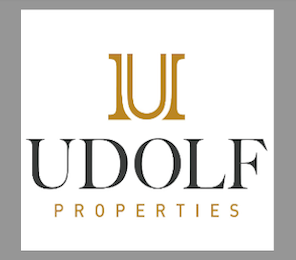One hundred years ago, Yiddish was declared a dead language, even as five million Jews throughout pre-Holocaust Europe claimed it as their native tongue. Today, Yiddish is still a living language among Chasidic communities, the Germanic and Biblical Hebrew base mixing with the street English of Boro Park, Brooklyn or the modern Hebrew of Jerusalem. Yiddish also has a home in academia, with programs from Israel to Germany to Oxford, England to North America a staple of Judaic studies departments.
Though not as prevalent as spoken Hebrew, one can still find Yiddish speakers, or at least Yiddish-lovers, in many Jewish communities throughout the world. The Ledger tracked down several in Connecticut to learn how they came to the language and how they’re keeping it alive.
~~~~~~~~~~~~~~~~~~~~~~~~~~~~~~~~~~~~~~~~~~~~~~~~~~~~~~~
Dr. Victor Bers
Hamden
Victor Bers didn’t speak at all until age three, and when he did, he spoke Yiddish.
Bers is a longtime professor of classics at Yale, specializing in ancient Greek language and culture. So he has a grasp of Yiddish not only as a native speaker, but also as a linguist.
Born in Providence, R.I. in 1944 to Holocaust survivors, he was raised in the tradition of the Bund, the secular Jewish socialist party founded in the Russian empire in the late 19th century. “My family has been atheist for three generations and I was not bar mitzvahed and I did not learn Hebrew,” he says. “That remains a problem for me in that some Yiddish literature is full of things which, for full appreciation, you need to have good Hebrew and not just know the Bible, but also Gemara (a component of the Talmud). As a component of the culture and the literature and sometimes the linguistic structure, Hebrew plays an important part. I was always interested in the Yiddish language, and regarded it as a disgrace that I couldn’t read it.”
When he was in his 40s, Bers began to address that deficiency.
He first arrived at Yale in 1972. Surprisingly, he discovered many fellow Yiddish-speakers. “I found that I could conduct a great deal of business in Yiddish with deans and assistant deans,” he says.
There has been a lot of potential over the years to establish a Yiddish program at Yale, Bers says, an aspiration left unrequited. A Yiddish discussion group was started in the mid-‘60s by Ethel Himberg, a secretary at the university who also taught Yiddish language and literature through Hillel at Yale. Sid Resnick, a staff member of the Yale Law School library, created the Yale-New Haven Yiddish Reading Circle in the mid-‘80s, and Bers was an early member. Prof. Howard Stern of the German department has taught Yiddish on and off, but the language has never even found a home in the department of Judaic studies, Bers says.
“There is a very strong emotional tie to Yiddish, but it is also very interesting linguistically and historically,” he says. “It is a fact that Yiddish lost a great portion of its native speakers in the Holocaust. When we lost them, we lost direct access to people whose first linguistic reflex is in Yiddish. I did get some of that: there are some things I still think in Yiddish, not in English. There is nothing like a native speaker, and as soon as the language is something learned instead, it’s very different. So I also feel an obligation to do what I can, particularly in an academic setting. What we need to do is encourage its cultivation.”
In 1994, Bers took over as owner of Mendele, a website devoted to the propagation of Yiddish. Founded in 1991 by Norman Miller, a sociologist teaching at Trinity College in Hartford, Mendele now boasts more than 2,000 subscribers throughout the world. When the website was moved to Yale’s servers, undergraduate Keith Weiser took over its editorship, and went on to become an associate professor of modern Jewish history at York University in Toronto. Weiser is one of three former Yale students who participated in the Yiddish reading circle and chose professional paths including Yiddish, Bers says. Ken Frieden, a professor and chair of Judaic studies at Syracuse University and Josh Price, who is also profiled here, are the two others.
Bers sees Yiddish confined to an academic future, but he is not worried at the prospect. At least students of Yiddish are fortunate to still have access to native speakers, unlike those who wish to know the sound of languages that are truly dead, Bers says. “It’s the sort of immediacy that we crave for classical Greek, and there we really don’t have it,” he says. “If I could have 20 minutes with Demosthenes or Sophocles, my knowledge of Greek would be far, far stronger.”
~~~~~~~~~~~~~~~~~~~~~~~~~~~~~~~~~~~~~~~~~~~~~~~~~~~~~~~
Dr. Sidney Doris
Fairfield
Dr. Sidney Doris is a native Yiddish speaker, thanks to his grandmother, who lived with the family when he was growing up in Bridgeport and Manhattan. “I was her pet,” he says. “She spoke to me in Yiddish and I had to respond in Yiddish.” When the family moved to New York, Doris attended the Workmen’s Circle “folkshul” and learned to read and write Yiddish, taught by Jewish intellectuals who had left Europe.
Doris served in World War II as a navigator in the U.S. Air Force. “I never gave up Yiddish,” he says. “I found it everywhere I went – South America, Mexico; we found Jews in Japan who spoke Yiddish. It was an international language.”
After earning a degree in dentistry at Temple University, Doris returned to Bridgeport to open a practice. Now retired, he is a longtime member of the Yale-New Haven Yiddish Reading Circle and has taught Yiddish at Norwalk Community College and Merkaz, the Community High School for Judaic Studies in Bridgeport.
Doris credits Yiddish humor and theater with creating much of modern American culture. He recently attended a memorial service at the Mount Hebron Cemetery in Queens, home to a Yiddish Theatrical Alliance burial plot.
“Yiddish theater had a tremendous influence on American theater because the children of the Yiddish theater are the ones who came into the American theater,” Doris says. “Stella Adler, Molly Picon, Morris Carnovsky, playwright Clifford Odets, Actors Studio co-founders Elia Kazan and Lee Strassberg. When Jews came to America, they were allowed to express themselves, so they opened little theater groups on Second Avenue in New York. Immigrants worked so hard and their only entertainment was the Yiddish theater. They went to laugh, to cry, to enjoy. It tied them to the old country.”
Doris says that he appreciates the language on a personal level, above all. “I love Yiddish for its warmth, intimacy, and humanity,” Doris says. “It’s my language and it’s special to me. It has aspects of Yiddishkeit. Even cultural Yiddish is about Torah, learning, thinking, and philosophy.”
~~~~~~~~~~~~~~~~~~~~~~~~~~~~~~~~~~~~~~~~~~~~~~~~~~~~~~~
Josh Price
Amherst, Mass.
Josh Price didn’t speak a word of Yiddish when he arrived as a freshman at Yale in 2007. By his last two semesters, he was teaching the language at the Slifka Center for Jewish Life on campus.
“My maternal grandfather spoke Yiddish fluently when I was growing up and would pepper his English with bits and pieces,” says the Fishkill, N.Y. native. “I was always curious about what Yiddish was and what the words meant, but all my interest in Yiddish was latent. When I got to college, I finally had enough academic freedom to try to explore that interest further and pretty early on discovered that Yale did not offer formal classes.”
Price cobbled together an independent Yiddish education, seeking out every professor throughout the faculty who had any knowledge of the language. He joined the weekly Yale-New Haven Yiddish Reading Circle at Slifka, studied with Prof. Victor Bers, and spent summers in YIVO’s intensive Yiddish educational programs in Manhattan and Lithuania. By the end of his sophomore year, he was asked to revamp the Mendele Yiddish website. For his senior project, Price wrote a first-ever translation of a work in Yiddish by Russian Jewish intellectual Chaim Zhitlovsky.
Now, Price is working at the Yiddish Book Center in Amherst, Mass. on a year-long fellowship for recent college graduates. His first task is to fine-tune the center’s online digital archives of 10,000 books, making the collection easier to search. He plans to enter a graduate program in Judaic studies next fall, focusing on modern Jewish history and Yiddish.
~~~~~~~~~~~~~~~~~~~~~~~~~~~~~~~~~~~~~~~~~~~~~~~~~~~~~~~
Gilda Simpkin
Stamford
The child of Polish Holocaust survivors who met in New York after the war, Gilda Simpkin grew up speaking both Yiddish and English as her first languages. “My father knew a lot of languages – Polish, Russian, Hebrew, German – and was a Yiddishist, a big advocate for the preservation of the language,” Simpkin says. “He insisted that I learn Yiddish, and only spoke Yiddish with me. My mother picked up English more quickly and spoke English with me, sometimes mixing Yiddish with English. So I was bi-lingual from the time I could speak.”
Simpkin is a lifelong member of the Workmen’s Circle, where her father served as a member of the executive board. She can remember seeing Yiddish theater performances throughout her childhood, starting from age two or three. Simpkin had cousins in Canada who also learned Yiddish as children, and other cousins who didn’t know the language. At family gatherings, she was often sent to eavesdrop on the adults’ Yiddish conversations and report back to the other kids.
Simpkin’s father would ask her to translate English words into Yiddish; she remembers requests for “trouble” and “disappointed.” “As a result, I’m amazed at how many words and expressions I still remember,” she says, “especially because today, I only regularly speak Yiddish with one person.”
Simpkin runs a regular monthly Yiddish cultural group at Atria, an assisted-living residence in Stamford. She has taught teens at Kulanu, the Jewish education program in Stamford, and at Temple Sinai in Stamford.
During her undergraduate studies at the City College of New York, she studied Yiddish with linguist Uriel Weinreich, author of the “Modern English-Yiddish Yiddish-English Dictionary” that Simpkin still carries around with her – “in case somebody asks me a word,” she says.
~~~~~~~~~~~~~~~~~~~~~~~~~~~~~~~~~~~~~~~~~~~~~~~~~~~~~~~
Dr. Israel Zelitch
Hamden
Israel Zelitch was born in Philadelphia of Eastern Europian parents. The family spoke only Yiddish at home, and Zelitch attended a nursery school run in Yiddish. He didn’t learn English until he entered first grade. His mother was very active in creating Workmen’s Circle Yiddish “folkshuls,” or dayschools throughout greater Philadelphia, which Zelitch attended through high school.
“We lived in Jewish neighborhoods where Yiddish was commonly spoken,” he says. “I played with kids in Yiddish, it seemed very natural. Most of the traveling Yiddish theater troupes came to Philadelphia and we went to all the shows. Even when I was in the army during World War II, I wrote letters home in Yiddish.”
Zelitch went on to earn a doctorate in biochemistry and pursued a career as a research scientist for the state of Connecticut. Officially retired since 1994, he still conducts research at the Connecticut Agricultural Experiment Station in New Haven.
Since 1975, Zelitch has been a member of the executive committee of the League for Yiddish, a position his father had held for many years. Originally founded in 1905 as the Jewish Territorialist Organization, the movement sought to resettle persecuted Eastern European Jews on safe ground, namely Suriname. “They were Yiddishists, not Zionists,” Zelitch explains. “Yiddish was always an important part of their being Jewish.”
Once the Zionist effort succeeded, the Territorialist movement faded away. In 1979, it was resurrected as the League for Yiddish. Today, its mission is to enhance the prestige of Yiddish as a living language. Since 1941, the League has published “Afn Shvel,” a Yiddish magazine renowned worldwide. The organization also produces CDs of interviews with Yiddish poets and musicians and will soon publish a new Yiddish-English dictionary.
“People said 100 years ago that Yiddish was dead – even when the ‘Yiddish Forward’ was selling a quarter-million copies a day – but it doesn’t want to die,” Zelitch says. “Even Sholem Aleichem started writing in Hebrew and nobody read his stuff, so he switched to Yiddish and became very successful. During the early years of modern Israel, people couldn’t get newspapers to print Yiddish newspapers. They had to buy it on the black market – but you could legally print newspapers in Arabic. But for many, it’s always been a big part of their being Jewish.”
Zelitch has been active for nearly 20 years in the Yale-New Haven Yiddish Reading Group, which he now leads. For the past decade, he has taught Yiddish at the Institute for Learning in Retirement (ILR) at Albertus Magnus College in New Haven. “I continue with my Yiddish activities because it’s part of my being Jewish,” he says.
Zelitch runs the ILR class to prepare students to join the reading group, which attracts between 12 and 20 participants every Wednesday afternoon. Members take turns reading parts of a short story or article, though some just listen, Zelitch says. The reading will stop when there is an unfamiliar word or phrase that requires explanation, often from a Slavic language.
“Pronunciations were different in different regions, but the written language was identical,” Zelitch says. “In the reading circle, we have members from various Jewish backgrounds and with different abilities in Yiddish. There’s a rule: no one mocks or laughs at another’s pronunciation. We’re here to enjoy the language and get what we can from it.”
~~~~~~~~~~~~~~~~~~~~~~~~~~~~~~~~~~~~~~~~~~~~~~~~~~~~~~~
Where to study and enjoy Yiddish in Connecticut
Online resources:
■ Der Bay, www.derbay.org
■ Folksbeine Yiddish Theatre: The oldest and only remaining professional Yiddish theatre in the U.S. Based in Manhattan with touring shows. www.folksbeine.org
■ League for Yiddish, www.leagueforyiddish.org
■ Mendele, http://mendele.commons.yale.edu/wp/
■ Yiddish Book Center, www.yiddishbookcenter.org
■ YIVO Institute for Jewish Research, www.yivoinstitute.org
■ Workmen’s Circle/Arbeter Ring, www.circle.org/
■ Yugntruf: Youth for Yiddish, http://yugntruf.org/?language=en
■ The Forward, America’s Yiddish newspaper, www.yiddish.forwar.com








 Southern New England Jewish Ledger
Southern New England Jewish Ledger














